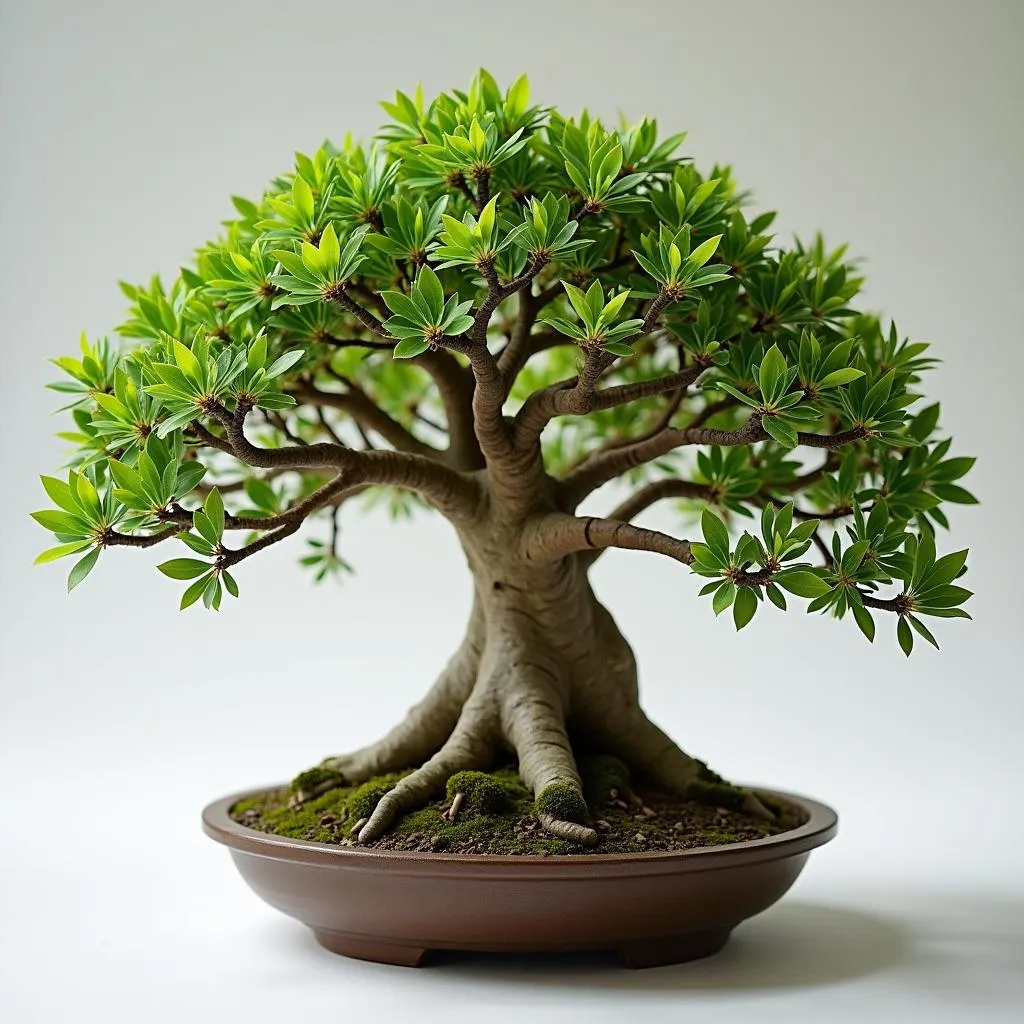The Fascinating World of African Baobab Bonsai: A Guide for Beginners
The African baobab (Adansonia digitata) is a majestic tree known for its unique bottle-shaped trunk and its ability to store massive amounts of water. In recent years, there’s been a growing interest in cultivating baobab bonsai trees, captivating plant enthusiasts with their miniature beauty and resilience. In this comprehensive guide, we’ll delve into the fascinating world of African Baobab Bonsai, exploring the key aspects of cultivating these remarkable trees.
What is Baobab Bonsai?
Baobab bonsai, also known as “mini baobabs,” are small-scale versions of the iconic African baobab tree. These bonsai trees are meticulously shaped and pruned to mimic the grandeur of their full-grown counterparts. With proper care, these miniature baobabs can live for decades, becoming cherished and captivating pieces of living art.
Why Choose Baobab Bonsai?
The popularity of baobab bonsai stems from several compelling factors:
- Uniqueness: Their unusual bottle-shaped trunk and distinctive foliage make them visually striking.
- Resilience: Baobab trees are incredibly resilient, capable of surviving harsh climates and drought conditions. This resilience translates to easier care for bonsai enthusiasts.
- Symbolism: In African culture, baobabs are revered for their longevity and strength, symbolizing life, wisdom, and community.
- Artistic Potential: The malleable nature of baobab wood allows for intricate and creative bonsai designs, showcasing the artistry of the cultivator.
How to Grow Baobab Bonsai
Cultivating baobab bonsai requires a bit of knowledge and patience. Here’s a step-by-step guide to get you started:
1. Sourcing Your Baobab Bonsai
You can find baobab bonsai trees from reputable bonsai nurseries or online retailers specializing in exotic bonsai varieties. When choosing a baobab bonsai, look for:
- Healthy Foliage: The leaves should be vibrant green and free from pests or diseases.
- Strong Trunk: The trunk should be sturdy and well-formed, displaying the characteristic bottle shape.
- Vigorous Root System: Inspect the root system for signs of health and vitality.
2. Finding the Right Location
Baobab bonsai thrive in warm, sunny environments. They require at least six hours of direct sunlight daily.
Pro Tip from Mr. Ngugi, renowned Tanzanian bonsai expert: “Baobab bonsai, like their full-sized counterparts, are lovers of sunlight. They bask in its warmth and flourish under its generous rays.”
3. Choosing the Right Soil
Baobab bonsai require a well-draining soil mix to prevent root rot. A blend of sandy loam, perlite, and coco coir is ideal.
4. Watering Your Baobab Bonsai
Baobab bonsai are relatively drought-tolerant but require regular watering, especially during the growing season. Allow the soil to dry slightly between waterings.
Expert Insight from Ms. Njeri, a Kenyan botanist: “Baobab bonsai, like their natural counterparts, have a remarkable ability to store water in their trunk. However, it’s important to maintain a balanced moisture level to ensure optimal growth.”
5. Fertilizing Your Baobab Bonsai
Baobab bonsai benefit from regular fertilization during the growing season. Use a balanced, slow-release fertilizer specifically formulated for bonsai trees.
6. Pruning Your Baobab Bonsai
Pruning is essential for shaping your baobab bonsai and maintaining its size. Prune branches and roots selectively during the dormant season to encourage branching and compact growth.
7. Repotting Your Baobab Bonsai
Baobab bonsai should be repotted every two to three years. Repotting allows for fresh soil, encourages healthy root growth, and helps prevent overcrowding.
The Beauty of Baobab Bonsai
The unique features of baobab bonsai, coupled with the meticulous care required, create a captivating experience for bonsai enthusiasts. These miniature trees become living works of art, showcasing the intricate balance between nature and human ingenuity.
Baobab Bonsai: A Timeless Symbol
Beyond their aesthetic appeal, baobab bonsai carry deep cultural significance. As symbols of resilience, strength, and wisdom, these bonsai trees serve as reminders of the enduring spirit of the African continent. They offer a glimpse into the rich traditions and values that have shaped generations of African people.
 African Baobab Bonsai Tree with Lush Foliage
African Baobab Bonsai Tree with Lush Foliage
Frequently Asked Questions (FAQs)
1. Are baobab bonsai trees difficult to care for?
While baobab bonsai require some attention, they are generally considered relatively easy to care for. They are resilient and adaptable to a range of conditions, making them a good choice for beginner bonsai enthusiasts.
2. How long do baobab bonsai trees live?
With proper care, baobab bonsai can live for several decades. Their longevity and resilience are a testament to the strength and enduring nature of the baobab species.
3. Can I grow baobab bonsai from seed?
Yes, you can grow baobab bonsai from seed. However, it is a lengthy process that requires patience and specialized techniques.
4. What is the best time to prune baobab bonsai?
The best time to prune baobab bonsai is during the dormant season, usually during the winter months when the tree is not actively growing.
5. Where can I buy baobab bonsai?
Baobab bonsai can be purchased from specialized bonsai nurseries or online retailers specializing in exotic bonsai varieties.
Conclusion
The African baobab bonsai is a captivating testament to the beauty and resilience of nature. With proper care and understanding, you can cultivate these miniature trees into stunning pieces of living art that will bring a touch of African charm to your home.
Contact Us: For any questions or inquiries, please contact us at:
- Phone Number: +255768904061
- Email: [email protected]
- Address: Mbarali DC Mawindi, Kangaga, Tanzania
We offer 24/7 customer support for all your baobab bonsai needs.

